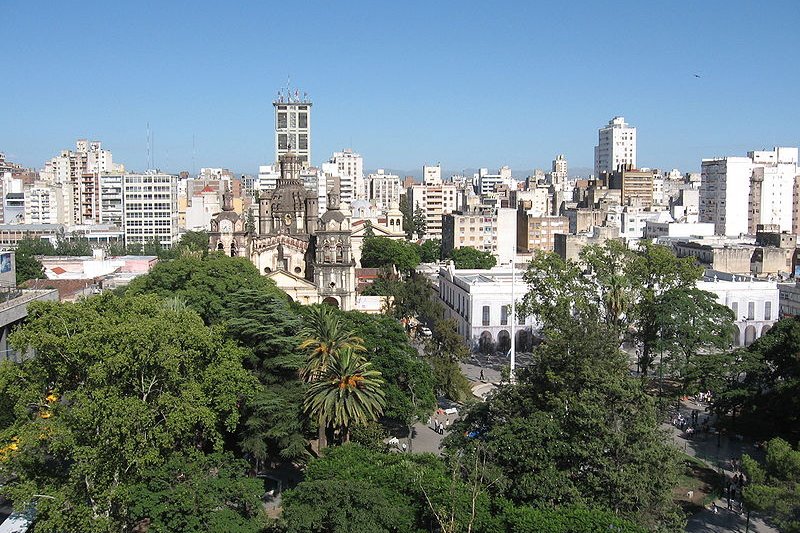 Córdoba, Argentina
Córdoba, ArgentinaSource: https://commons.wikimedia.org/wiki/File:Catedral_y_Cabildo_de_Cordoba.JPG
Author: Belgrano

Córdoba is the second biggest city in Argentina. It is located on the Suquía River about 700 km (435 mi) to the northwest of Buenos Aires. The city covers 576 sq km (222.4 sq mi) and has a popularion of 1.3 million people (2011 estimate). It is the provincial capital of Córdoba Province.
Córdoba has a well preserved Old Town with numerous historic buildings of Spanish colonial architecture. Some of the most significant buildings are located around the Plaza San Martín. The Jesuit Block and Estancias of Córdoba, a complex of buildings from the 17th century, was recognised as a World Heritage Site in 2000.
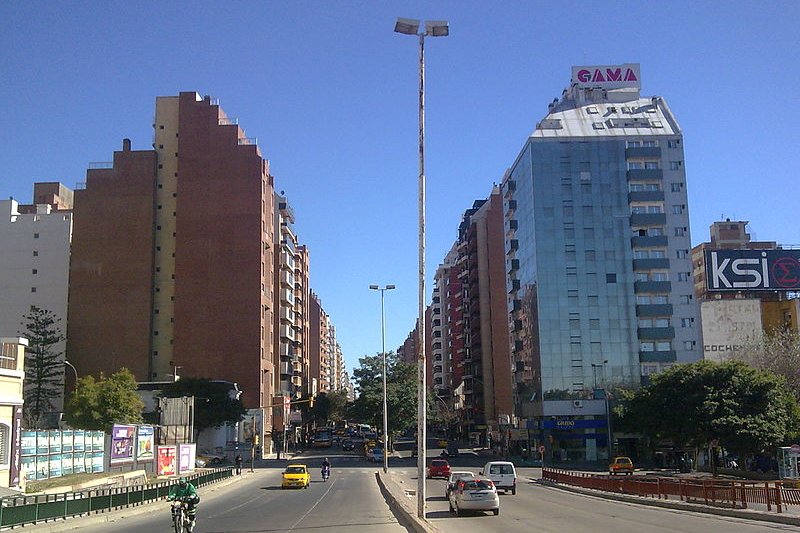 Avenida Amadeo Sabattini, Córdoba
Avenida Amadeo Sabattini, CórdobaSource: https://commons.wikimedia.org/wiki/File:Avenida_Sabattini_hacia_el_oeste_C%C3%B3rdoba_%28Argentina%29_2010-07-12.jpg
Author: Alakasam

Córdoba also has many universities. In fact the number of students pursuing higher education in the city alone total some 200,000, making it one of the youngest and most youthful cities in South America.
Córdoba is located at an elevation ranging from 352 m (1,154 ft) to 544 m (1,784 ft). The city experiences a humid subtropical climate moderated by winds from the Pampas. There are four distinct seasons here, with summer running from late November till early March and winter from late may till early September. Warmest month Months are December to January, with average high temperatures of 29°C while July is the coldest month, when average temperature deops to 4°C.
The area where Córdoba is located was the traditional homeland of the Comechingones tribe. Modern Córdoba was founded in 1573 by Jerónimo Luis de Cabrera, who decided to name it after the city of Córdoba in Spain. It was one of the oldest cities in Argentina, second perhaps only to Santiago del Estero.
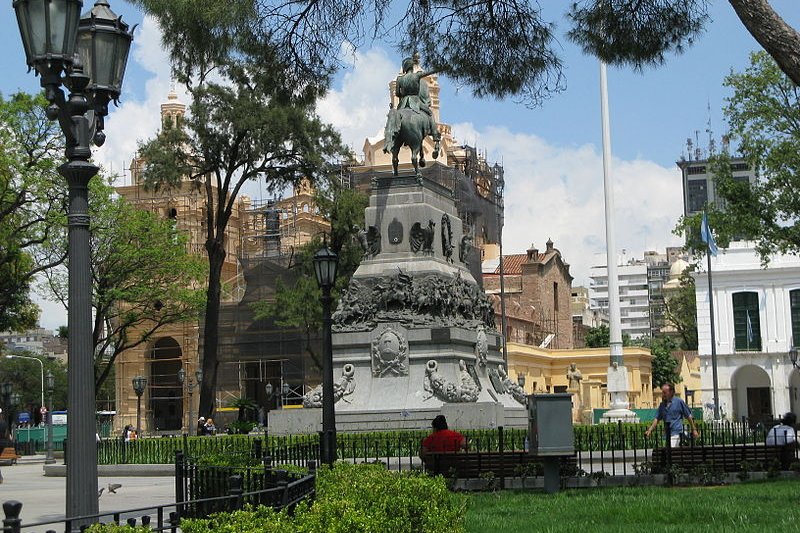 Plaza San Martín, Córdoba
Plaza San Martín, CórdobaSource: https://commons.wikimedia.org/wiki/File:Plaza_San_Mart%C3%ADn_C%C3%B3rdoba_2009-11-29_02.jpg
Author: Alakasam

The Jesuits arrive in Córdoba in 1599. The church they built, still standing today, is one of the oldest buildings in South America. The Jesuits also established the Colegio Maximo, which became the University of Córdoba in 1613, and today the National University of Córdoba, the fourth oldest university in the Americas.
Córdoba is today a modern city and a major financial hub of South Americas. It has a well-developed downtown with its fair share of high rise buildings. The streets are laid out in a grid plan. The terminal building dates from 2002. The airport receives flights mostly from Latin American and Spanish cities.
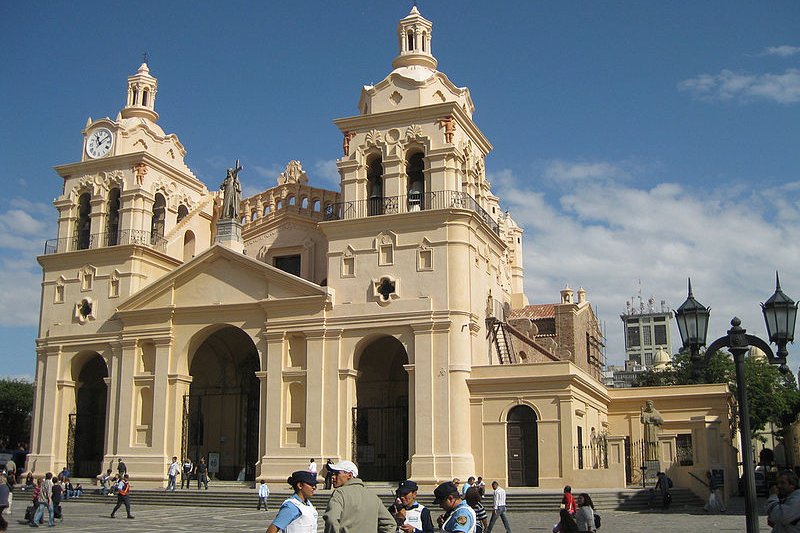 Catedral de Córdoba
Catedral de CórdobaSource: https://commons.wikimedia.org/wiki/File:Catedral_de_C%C3%B3rdoba_%28Argentina%29_2010-04-09.jpg
Author: Alakasam

Visiting Córdoba, Argentina
The Ingeniero Aeronáutico Ambrosio L.V. Trarvella International Airport (COR), also called the Pajas Blancas Airport, is the main gateway to Córdoba. It is the third largest airport in Argentina after the two airports in Buenos Aires. Alternatively, you can fly to Buenos Aires change to a domestic flight for Córdoba. There's a bus from the airport to the city center. The fare is AR$2.50. The same journey by taxi costs AR$90. Public transport in Córdoba comprises buses, trolley buses and taxis. Buses are color coded according to route. The usual fare is around AR$2.00, paid using special bus coins (cospeles) or bus card. You should obtain these if you intend to take public transport, as the driver might not always accept pesos. Taxi fares start at AR$6.00 for a 15-block ride.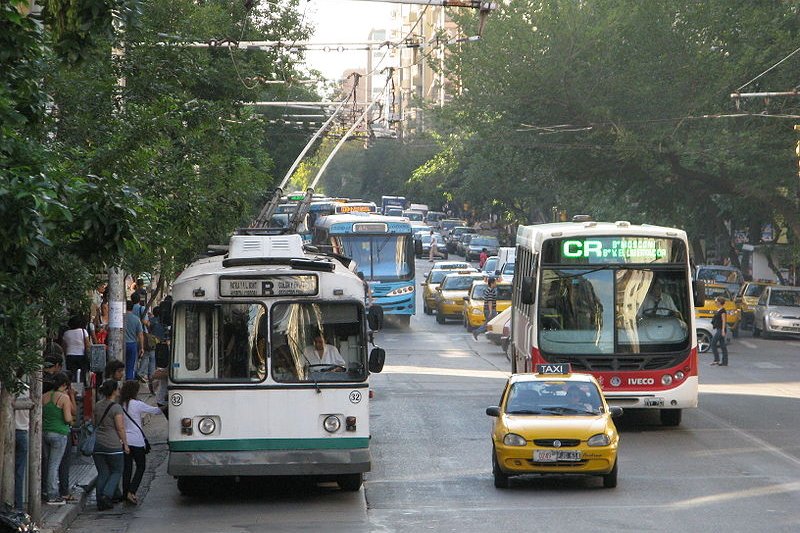 Trolleybus, taxi and buses of Córdoba
Trolleybus, taxi and buses of CórdobaSource: https://commons.wikimedia.org/wiki/File:Transporte_en_C%C3%B3rdoba_%28Argentina%29_2009-11-27.jpg
Author: Christian Córdova

Places of Interest in Córdoba
- Cripta Jesuítica del Noviciado Viejo
Site of a Jesuit novitiate from the 17th century. It was run until 1773, when the Jesuits were expelled from Argentina. - Plaza San Martín
The main square in Córdoba, surrounded by main historic buildings. There is also the equestrian statue of José San Martín, the Argentine liberation hero at the square. - Iglesia Catderal
The cathedral church of Córdoba dates from 1782 and is the oldest cathedral in Argentina. - Manzana de las Luces
Meaning "Block of Enlightenment", this is a Jesuit complex from which they began their evangelical mission across central and northwestern Argentina. Today it is part of the Jesuit Block World Heritage Site. - Museo Histórico Provincial Marqués de Sobremonte
Museum exhibiting 18th century artifacts housed in the former residence of the Governor-General of Córdoba. - Museo Municipal de Bellas Artes Dr. Genaro Pèrez
The municipal art gallery exhibiting Argentinian works from the 18th and 19th centuries.
 Latest updates on Penang Travel Tips
Latest updates on Penang Travel Tips
Songs about Penang
About this website

Hello and thanks for reading this page. My name is Timothy and my hobby is in describing places so that I can share the information with the general public. My website has become the go to site for a lot of people including students, teachers, journalists, etc. whenever they seek information on places, particularly those in Malaysia and Singapore. I have been doing this since 5 January 2003, for over twenty years already. You can read about me at Discover Timothy. By now I have compiled information on thousands of places, mostly in Peninsular Malaysia and Singapore, and I continue to add more almost every day. My goal is to describe every street in every town in Malaysia and Singapore.
Copyright © 2003-2024 Timothy Tye. All Rights Reserved.


 Go Back
Go Back